![]() Connected device engineering includes all of the computing gadgets that connect to the internet to transmit data, perform tasks and fulfill their value proposition. One general class of connected devices includes those with sophisticated user interfaces, such as smartphones, laptops, security panels, vehicles and smart speakers. These generally act as the gateway to the internet for devices with more limited user interfaces, like smartwatches or headphones, which may only have an on/off and simple push buttons.
Connected device engineering includes all of the computing gadgets that connect to the internet to transmit data, perform tasks and fulfill their value proposition. One general class of connected devices includes those with sophisticated user interfaces, such as smartphones, laptops, security panels, vehicles and smart speakers. These generally act as the gateway to the internet for devices with more limited user interfaces, like smartwatches or headphones, which may only have an on/off and simple push buttons.
The other class of connected devices is the “things” that constitute the Internet of Things. Broadly speaking, internet-connected devices — including smart thermostats, trackers, smart doorbells and locks, security monitoring systems, smart refrigerators, industrial sensors, etc. — can provide sense and/or control capabilities that are managed through the cloud. These smart gadgets can further be classified into markets such as smart home, industrial IoT, fleet tracking/management, healthcare and everything in between.
Connected Device Development Experts
Designing the “Things” of the IoT requires a team with skills in hardware, embedded software engineering services and often antenna design. Electrical hardware engineers focus on function, optimizing the bill of materials (BOM), and ensuring the device can be manufactured without any supply chain issues. Embedded software engineers are responsible for developing all of the connected device’s features, including power optimization as well as any AI/ML done on the edge. The more specialized RF engineers optimize communications to meet the device’s requirements and shepherd it through FCC certification.
Connected Device Design
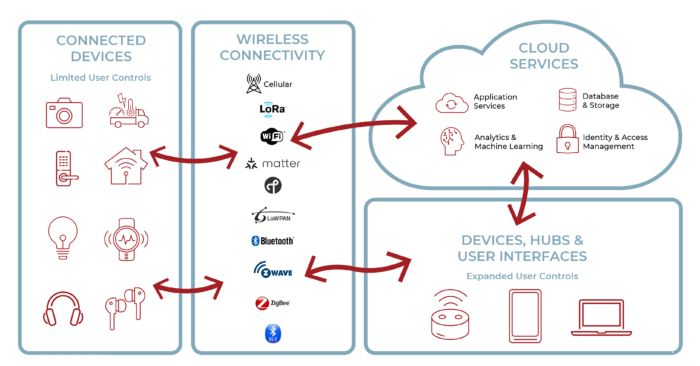
End-to-End Connected Device Engineering Services
While this page focuses on what you should expect during the connected device development process, Cardinal Peak provides full life cycle engineering services for connected devices and cloud applications. With over 2,000 dedicated IoT specialized resources and another 900 AI/ML experts, we accelerate your IoT product journey. Our end-to-end design services coupled with our managed services and sustaining engineering provide you with complete IoT product life cycle support. As a leading electronic and digital product engineering firm, Cardinal Peak leverages deep experience in hardware, embedded software, cloud, end-user applications, such as mobile, and quality assurance to develop connected IoT products in multiple markets, including audio, automotive, video, security and healthcare.
Product Ideation
Developing differentiated products that disrupt markets
IoT Engineering
Designing products that integrate with mobile applications and cloud systems
Voice
Experts at embedding voice processing capabilities in connected devices
Quality Assurance
From black box testing to test automation and manufacturing support
Managed Services
IoT fleet management, network management, and tier 2 support
Sustaining Engineering
Cost effective sustaining engineering to keep your IoT products current and operating as underlying services change
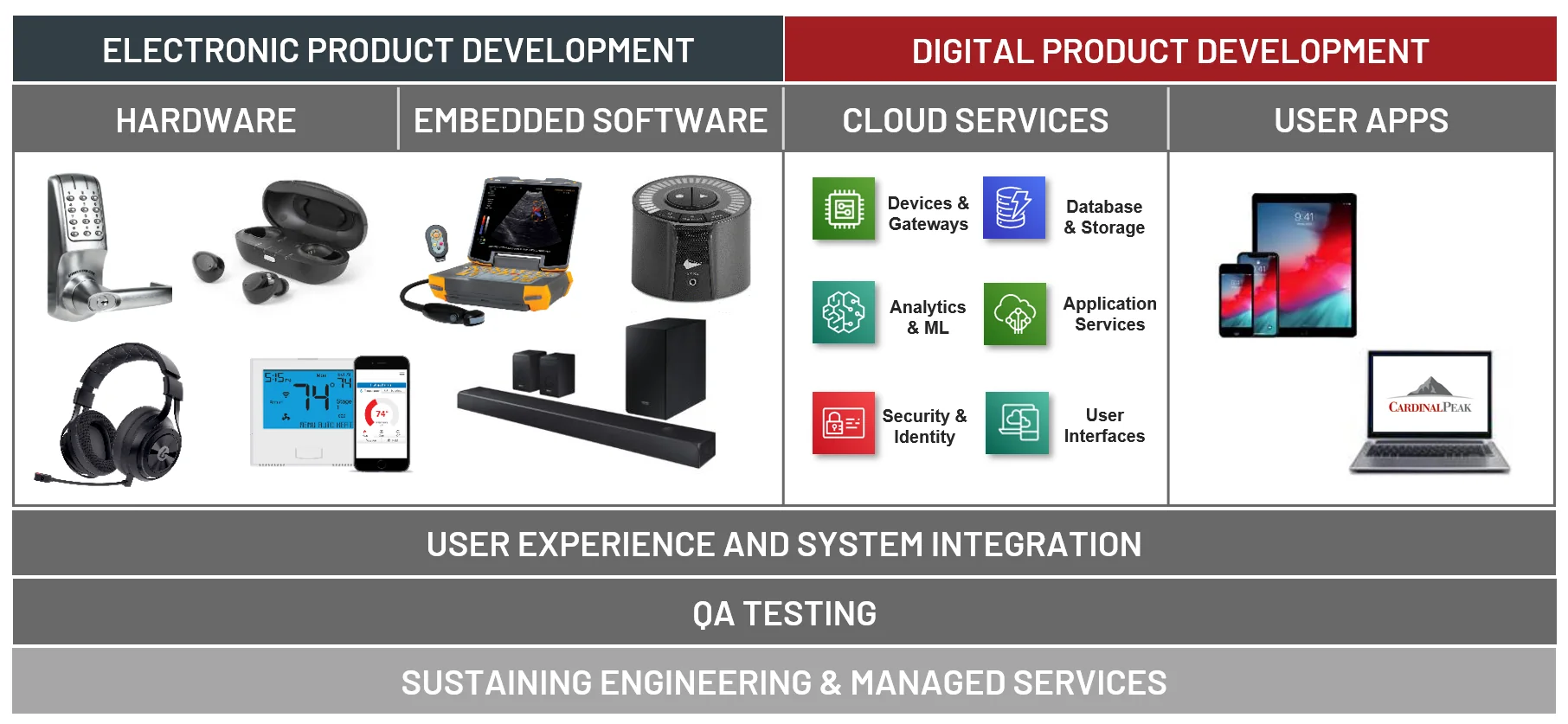
Connected Device Development Case Studies
As a leading connected device engineering company, Cardinal Peak supports innovative connected device design services, including connectivity, cloud, edge AI/ML, and IoT app development. If you’re looking for a partner to help bring your internet-connected thing to life, check out the projects below and contact us today.
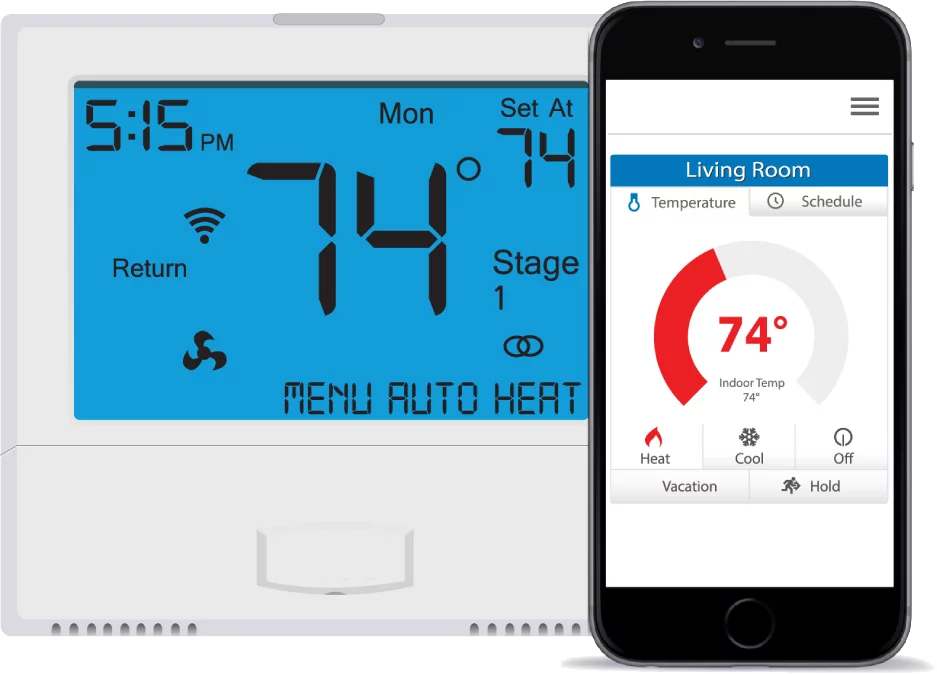
Our Connected Device Designs
Having provided innovative connected device services for two decades, Cardinal Peak is uniquely qualified to help you with connected device design and engineering. This page spotlights several devices we’ve designed and answers connected engineering FAQs.
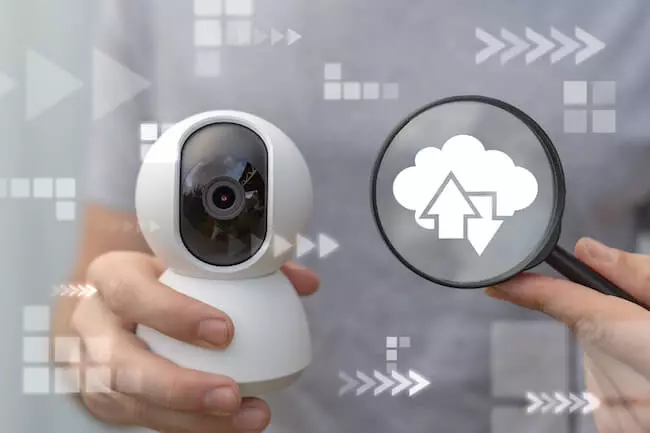
Scalable Video Cloud Service using Web Sockets
Leveraging extensive connected device engineering expertise, we helped a client realize significant cloud cost savings. This case study highlights how we overcame challenges like scaling always-connected devices while keeping operating costs down.
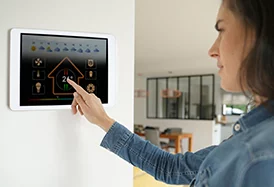
Voice-Enabled Connected Device Development
Showcasing deep connected device design experience, this case study analyzes how our device engineering experts designed a smart home automation tablet with Alexa voice capabilities, video intercom and audio alerts. Check out the case study for more information.
Having provided innovative connected device services for two decades, Cardinal Peak is uniquely qualified to help you with connected device design and engineering. This page spotlights several devices we’ve designed and answers connected engineering FAQs.
Leveraging extensive connected device engineering expertise, we helped a client realize significant cloud cost savings. This case study highlights how we overcame challenges like scaling always-connected devices while keeping operating costs down.
Showcasing deep connected device design experience, this case study analyzes how our device engineering experts designed a smart home automation tablet with Alexa voice capabilities, video intercom and audio alerts. Check out the case study for more information.
Connected Device Design & Engineering Resources
If you’re seeking more detailed information on the technologies involved in connected engineering, the steps that make up the connected device development process or the unique aspects of connected device engineering services in the smart home sector, peruse the following webpages for additional information.
Connected Device Development Considerations
The first step in any connected device development process is ensuring the validity of the business model. To evaluate your business model, it’s important to compare your connected device development or engineering costs to your anticipated revenue. Costs can be broken into two categories, including nonrecurring engineering (NRE) and operational costs, which include manufactured cost of goods as well as ongoing cloud costs. Cardinal Peak can help estimate all these costs before the design process starts so that you can validate your business model.
In addition to the standard device engineering activities, our electrical engineers are focused on BOM and supply chain analyses. Since it is crucial that the manufactured cost meets targets and that the parts are available for manufacturing, we typically negotiate prices for key components before leveraging those components in our connected device design. These agreements are later transferred to the purchasing agent at the manufacturer.
Why Cardinal Peak Stands Out for Connected Device Design
A unique capability at Cardinal Peak is our RF design experience. While not always required, customers frequently look for superior RF performance, which requires a custom antenna design. We have designed custom antennas for a wide variety of internet-connected products. While a custom antenna design can greatly outperform stock antennas, customization comes with the additional burden of FCC certification. Our engineers can manage the entire certification process.
To ensure secure connected device engineering and embedded software, it’s important to design in the ability to apply software updates and patches to deployed equipment. Design in over-the-air software update capabilities because no matter how secure a product is at launch, a software vulnerability will eventually be identified. Establish a secure root of trust and design a system that prevents would-be hackers from loading unauthorized firmware. Additionally, encryption should be layered on top to ensure user data privacy.
- For audio and video devices, latency and fidelity are general concerns. Check out our Video System Design for Police Radar Product and Engineering a True Wireless Earbud System case studies to learn more about our significant audio and video experience.
- To understand how connected devices are transforming industries, check out our blog post The Rise of Connected Device Engineering: Transforming Industries Through IoT Integration.
- Read what’s possible with smart home and smart city IoT in our blog post How Connected Device Engineering Advances Smart Homes and Cities.
The Importance of Cloud Application in Connected Device Engineering
Our deep understanding of cloud applications helps us design connected products to minimize cloud costs. While the cost of an individual cloud transaction is minuscule, having thousands of devices in the field sending frequent packets to the cloud can lead to significant monthly spending with a cloud provider. At Cardinal Peak, we work to minimize the amount of data that needs to go to the cloud, whether through the use of machine learning/artificial intelligence at the edge to process the data locally or via more elaborate designs to ensure only the necessary data is sent to the cloud. For example, we developed a home video camera system that preprocessed the video and only uploaded short clips when alarms were triggered, while the rest of the data was stored on the camera. When users clicked on the alarm video thumbnail in the app, the video immediately started playing the clip from the cloud and a connection directly to the camera was initiated behind the scenes to continue streaming video beyond the uploaded clip, saving enormous cloud costs while providing a system with exceedingly low latency.
At Cardinal Peak, our experienced and talented engineers and architects help companies across industries to develop and maintain connected devices and products. We work on every aspect of connected device engineering, including the cloud, hardware and embedded software, and understand how to minimize both the device bill of materials and the long-term cloud costs. With this level of expertise, we possess the skills and experience necessary to design and develop connected devices capable of thriving in today’s networked ecosystems.
Connected Device Development FAQs
What is a Connected Device?
Connected devices are wireless devices that communicate with other devices and systems via the internet. Devices that connect to the internet are often referred to as Internet of Things (IoT) devices or connected devices. A device that only connects to a smartphone, however, is a connected device but not an IoT device.
What is Connected Device Engineering?
The engineering development process for connected devices and IoT devices are comparable. The first step in connected device design and engineering is envisioning the product’s value proposition (ideation) and documenting the features that need to be implemented (the requirements). When engineering a connected device, remember to identify the data that needs to be collected, processed and displayed so that the wireless interface(s) can be described. With a good interface description, device and application development can proceed in parallel as engineers work on the API (application programming interface). As features are implemented, the system begins undergoing regular QA testing for each new feature and regression testing for previously developed features. Once complete, testing expands to alpha testing (“friends and family”) then beta testing (small set of customers), and any manufacturing test and configuration tools are prepared. Finally, the product is released. As widespread user data comes back and the marketing team sees what resonates with customers, features are added or tweaked and pushed out through OTA updates.
What are Some Important Connected Device Engineering Requirements?
Connected devices are naturally complex. These complicated systems require detailed knowledge of communications protocols, security standards, data collection, edge AI/ML and analytics. Plus, since many internet-connected products are high volume, designing to minimize both the device bill of materials and any long-term cloud costs is vital.
Embedded with processing chips, software and sensors, connected devices require connectivity, data processing and an intuitive user interface to collect data and share information with other devices and systems. When it comes to connected device development or engineering, there are a couple of additional technological concerns of which engineers must also be aware:
- energy usage
- connected device security
- over-the-air (OTA) updates
Connected Device Engineering Related Articles
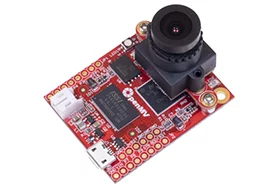
Building Edge ML/AI Applications Using the OpenMV Cam
As IoT devices continue to proliferate, knowing how to build ML/AI applications at the edge is increasing in importance. This blog post highlights the steps involved in utilizing the OpenMV Cam to build these forward-thinking applications.
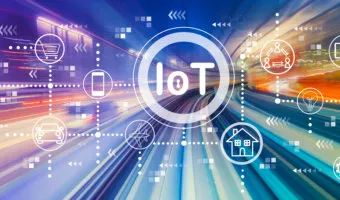
Creating Value for Your Business with End-to-End Connected Engineering
From connectivity, flexibility and scalability to automation, efficiency and collaboration, connected device engineering delivers significant value that helps move businesses across industries into our increasingly digital future.
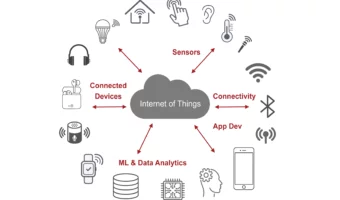
What is Connected Device Design and Engineering?
With connected devices becoming increasingly ubiquitous, connected device development is more important than ever. In this post, our experts detail various considerations involved throughout the process of device engineering.
As IoT devices continue to proliferate, knowing how to build ML/AI applications at the edge is increasing in importance. This blog post highlights the steps involved in utilizing the OpenMV Cam to build these forward-thinking applications.
From connectivity, flexibility and scalability to automation, efficiency and collaboration, connected device engineering delivers significant value that helps move businesses across industries into our increasingly digital future.
With connected devices becoming increasingly ubiquitous, connected device development is more important than ever. In this post, our experts detail various considerations involved throughout the process of device engineering.
Read Our Guide to End-to-End IoT Product Design
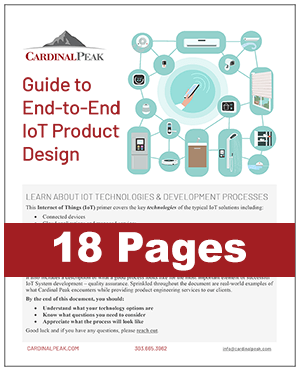 Download our whitepaper on end-to-end IoT product design to understand options and questions to consider for your connected device development. Learn about the IoT development process, typical IoT technologies, cloud services that can support your device, how to plan your mobile app development, security considerations, and more.
Download our whitepaper on end-to-end IoT product design to understand options and questions to consider for your connected device development. Learn about the IoT development process, typical IoT technologies, cloud services that can support your device, how to plan your mobile app development, security considerations, and more.
See more information on our Guide to End-to-End IoT Product Design.





